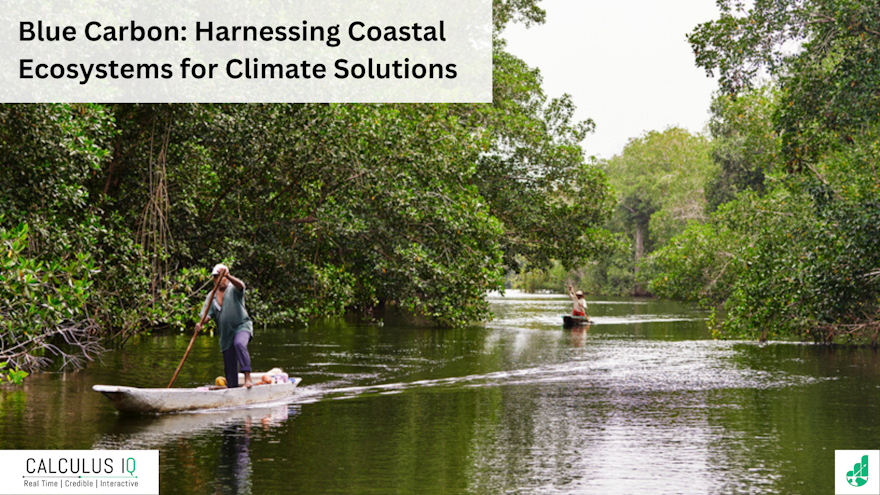Introduction
As the world grapples with the escalating threats of climate change, innovative carbon offset projects have gained prominence. Among these, an emerging concept is capturing the limelight – blue carbon. This new crediting method harnesses the potential of marine ecosystems to combat carbon emissions, spotlighting the protection and restoration of coastal habitats. This article delves into the realm of blue carbon, exploring its definition, significance, generation of credits, and role in mitigating climate change.
Harnessing Blue Carbon: The Untapped Carbon Sink
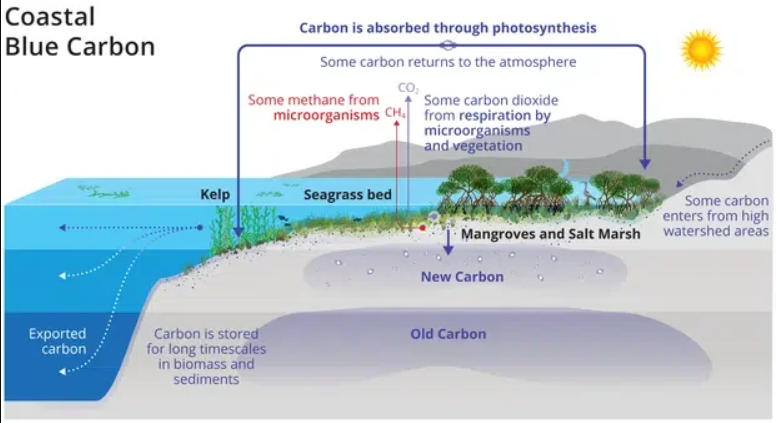
Figure 1: Coastal Ecosystem (Source: NOAA Climate.gov)
Coastal ecosystems such as mangroves, tidal marshes, and seagrass meadows are not only guardians against natural disasters but also vital carbon reservoirs. Despite covering just 2% of the ocean's surface, these habitats store a staggering 50% of carbon in their sediments – equivalent to eight years of fossil fuel emissions.
However, these ecosystems are under duress, with 25% to 50% of marine habitats lost in the past century.
Defining Blue Carbon Credits
Blue carbon refers to carbon stored in marine ecosystems, notably mangroves, seagrasses, and salt marshes. These habitats offer not only ecological benefits like shoreline protection and water quality maintenance but also exhibit extraordinary carbon sequestration capabilities.
Research reveals that coastal wetlands and seagrass beds can absorb carbon up to 40 times faster than tropical rainforests, making them potent allies in climate change mitigation.
Generating Blue Carbon Credits
When coastal ecosystems, like seagrass meadows, are safeguarded or restored, they capture carbon. Quantifying and verifying this carbon capture yields blue carbon credits. These credits are tradable commodities on carbon markets, allowing entities to offset their greenhouse gas emissions. Revenue from credit sales supports the conservation and restoration of these vital ecosystems.
To ensure credibility, blue carbon credits must adhere to established standards like the Verified Carbon Standard or the Gold Standard.
Types of Blue Carbon Projects
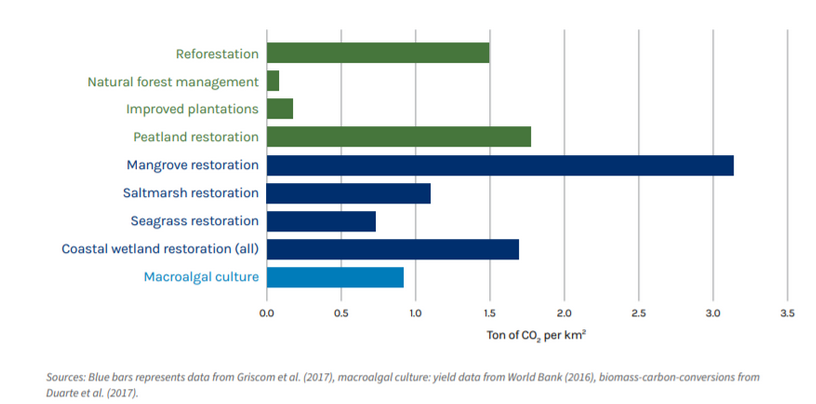
Figure 2: Revitalizing mangroves, saltmarshes, and seagrass habitats holds immense potential for carbon storage (Source: WEF)
Mangroves: These coastal wonders, storing immense carbon reserves, have become focal points of blue carbon projects. Mangrove restoration initiatives, responsible for significant carbon capture and co-benefits, have earned recognition. Notable collaborations, such as Apple and Conservation International, have validated the potential of mangroves to sequester carbon.
Salt Marshes: Situated near beaches, salt marshes boast substantial carbon storage potential in their soils. Although relatively less biodiverse, they play a crucial role in carbon sequestration and ecosystem preservation.
Seagrasses: Found along coastlines worldwide, seagrass meadows are underwater carbon storehouses. These ecosystems effectively capture carbon in their soils, contributing to the overall carbon balance.
Seaweed Farming: This innovative approach combines biomass farming with carbon sequestration. Seaweed's rapid growth and CO2 capture potential make it a promising player in the blue carbon landscape.
Blue Carbon Projects in Action
While the practicality and scientific certainty might differ, compelling arguments arise, indicating that blue carbon solutions hold substantial promise. Companies are now embarking on projects as part of their journeys towards achieving net-zero emissions.
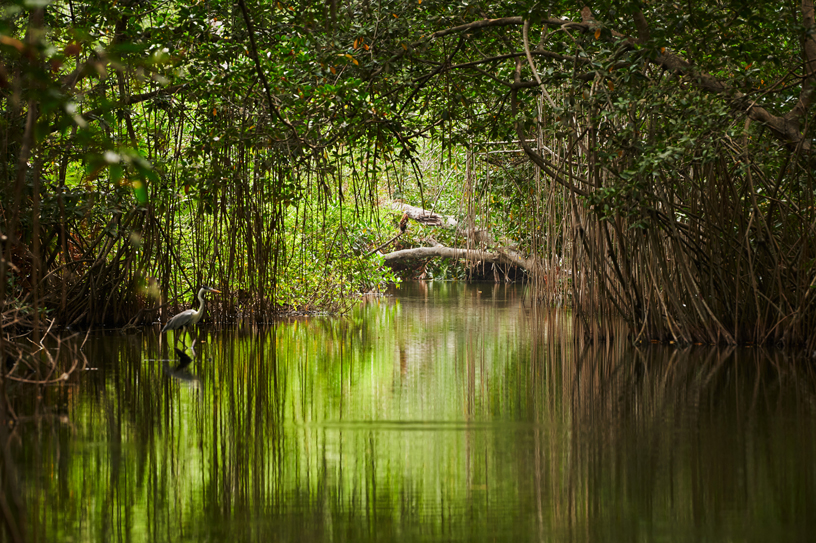
Image: Cispatá Bay, Colombia A prime example is Apple's collaboration with Conservation International, aimed at safeguarding a 27,000-acre mangrove forest in Colombia. This initiative marks the first fully accountable carbon offset credit for a mangrove ecosystem, anticipated to sequester a million metric tons of CO2 over its lifetime. Similarly, Procter & Gamble has joined forces with the same organization to protect 31 mangrove species in the Philippines.
Another driving force is the ongoing refinement of methodologies to assess and quantify project impacts. In 2020, Verra, a standards-setting body, introduced the first approved blue carbon conservation methodology within any major carbon-offset program. This methodology, a revision of the VCS REDD+ Methodology Framework (VM0007), includes blue carbon conservation and restoration activities as eligible project types. Its implementation is poised to open new avenues for funding tidal wetland conservation and restoration initiatives.
Challenges and Opportunities
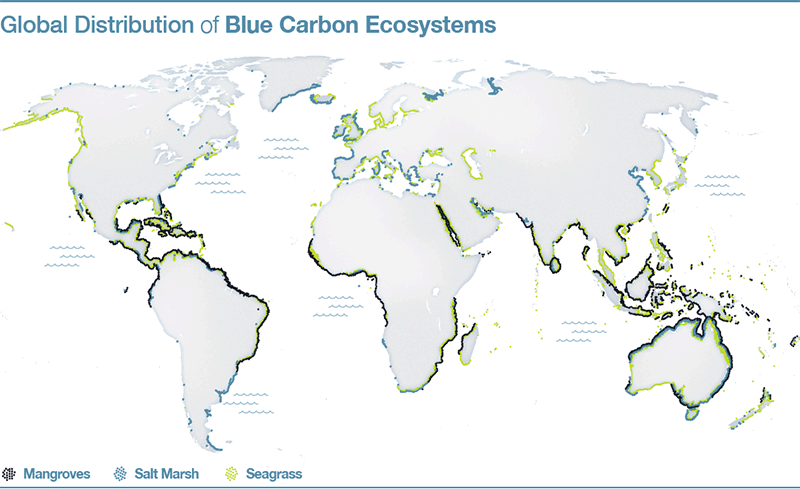
Figure 3: Global Potential of Blue Carbon
Blue carbon solutions, despite their increasing viability in aiding companies and organizations to reach net-zero objectives, face a range of formidable challenges and promising prospects. One of the most striking indicators of their potential is the surging demand for blue carbon credits, commanding a notable premium over other nature-based solutions (NBS) credits. The salience of their worth was underscored by the Delta Blue Carbon Project's landmark open credit sale in 2022, fetching approximately $27.80 per credit.
This resiliency within the blue carbon market against the backdrop of fluctuations in NBS pricing attests to the unwavering confidence in its effectiveness. However, beneath this optimism lies a complex landscape of challenges that must be navigated to fully harness the potential of blue carbon solutions.
Many of these groundbreaking ideas remain in nascent stages of scientific exploration, leading to uncertainties about their capacity for carbon abatement. Seaweed farming and avoided bottom trawling, for instance, are areas where the precise mechanisms influencing atmospheric CO2 levels remain scientifically elusive, given the intricate interplay of biogeochemical processes within seawater and ocean currents that impact the net exchange of CO2 with the atmosphere.
Amid these scientific uncertainties, the intricate web of coastal and marine legal frameworks further complicates matters. Coastal and estuarine environments, subject to national jurisdictions, often find themselves tangled in a complex tapestry of subnational regulatory and administrative regimes. As one moves into offshore oceanic areas, governance shifts to the United Nations Convention on the Law of the Sea and the UN Environment Programme, fostering consensus-based approaches. However, within 200 nautical miles of coastlines, individual nations retain resource rights, while conflicts over land tenure closer to shore add another layer of complexity.
Amid these intricacies, the practical road to implementation in many nations is poised to be a challenging one. Developers embarking on coastal blue carbon projects will need to adeptly navigate interactions with local communities, striking a delicate balance by respecting traditional access and tenure rights while supporting the preservation of marine resources. It's crucial to acknowledge that despite its potential, blue carbon projects currently account for a mere 3% of total climate investments. This underscores the necessity for further investment and commitment to unlock the transformative potential of blue carbon solutions.
The Promise of Blue Carbon
The journey into the world of blue carbon reveals a captivating story of untapped potential and newfound hope in the fight against climate change. As the world grapples with the escalating threats of global warming, the emergence of blue carbon as an innovative carbon offsetting solution offers a beacon of promise. This remarkable concept capitalizes on the power of marine ecosystems to become a formidable ally in carbon mitigation efforts. The initiatives to protect and restore coastal habitats bring to light the dual role these ecosystems play – not only as guardians against natural disasters but also as vital carbon reservoirs, quietly sequestering carbon beneath the waves.
The surge of interest and investment in blue carbon credits reflects the growing recognition of their immense worth. The resilient performance of the blue carbon market amidst the fluctuations of NBS pricing underscores the resolute belief in its effectiveness. However, the road ahead is far from straightforward. As the scientific community continues to explore the intricacies of various blue carbon solutions, uncertainties persist, demanding rigorous investigation and validation.
Navigating the complexities of coastal and marine legal frameworks presents yet another layer of challenges. The delicate balance of governance between national and international jurisdictions, coupled with disputes over land tenure, necessitates careful navigation. Yet, amidst these challenges lie unprecedented opportunities. The transformative potential of blue carbon solutions in combating climate change is vast, demonstrated by projects like Apple's collaboration with Conservation International, illuminating the path toward a greener future.
Despite its current status as a niche recipient of climate investments, the potential of blue carbon remains boundless. The promise of blue carbon lies in its capacity not only to offset carbon emissions but to reinvigorate ecosystems, bolster coastal resilience, and foster sustainable livelihoods for communities around the world. As science, policy, and innovation converge, blue carbon holds the potential to be a linchpin in the global efforts to address climate change, offering a promise of renewal for our oceans and the planet.
![[object Object]](/lib_ubcXiSgTRmkLVyyT/k8w528b9mk1p20to.png?w=400)
